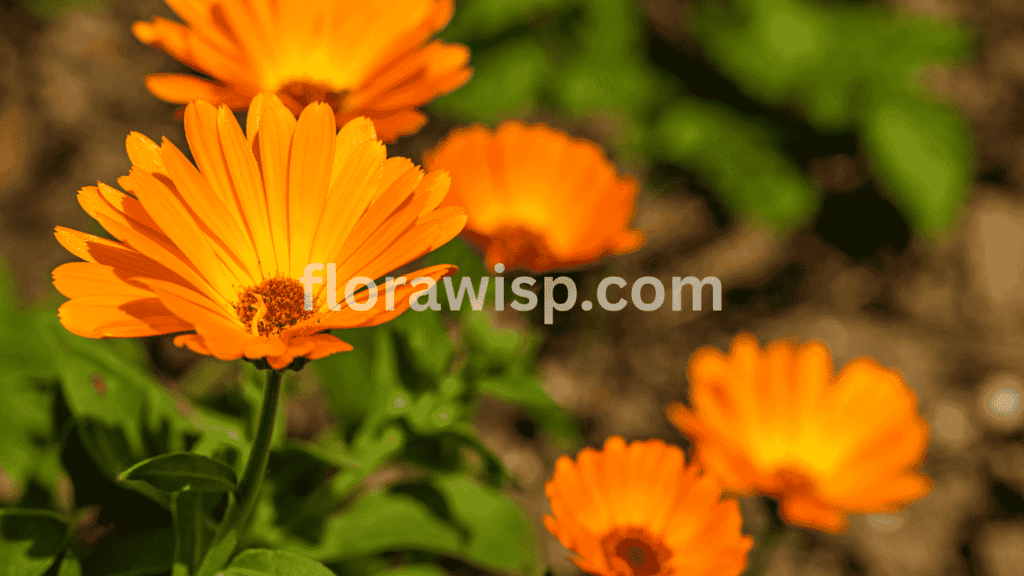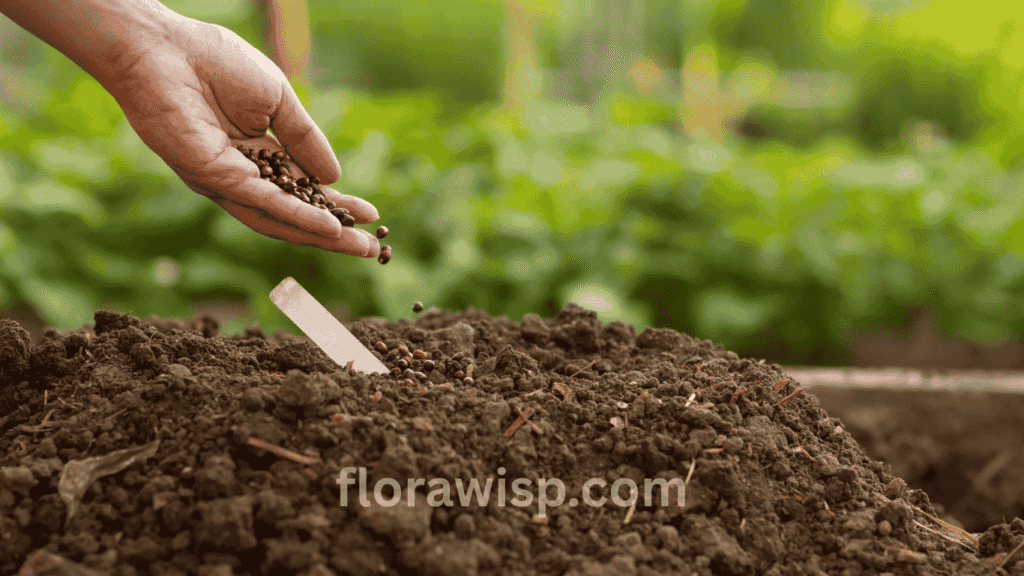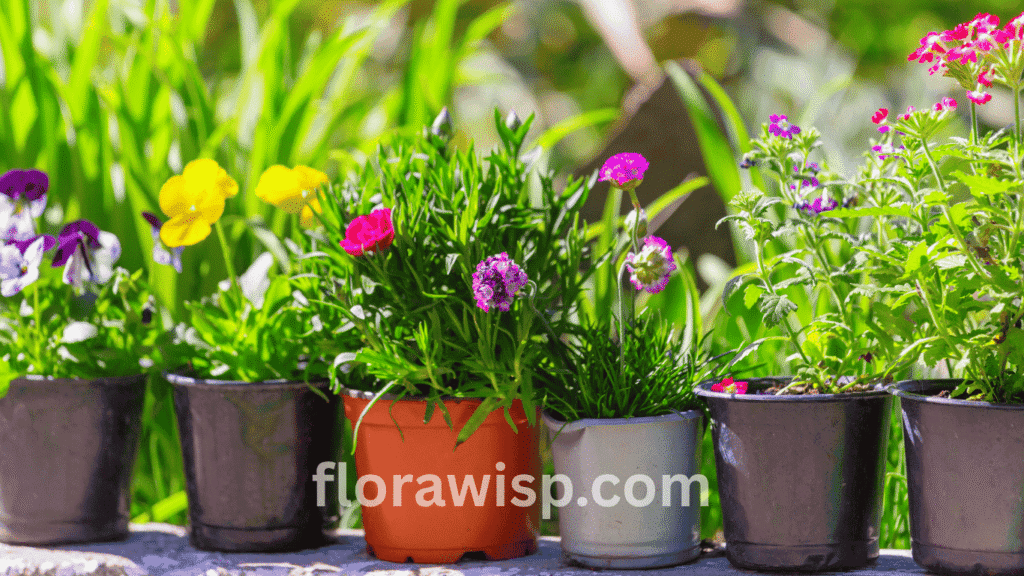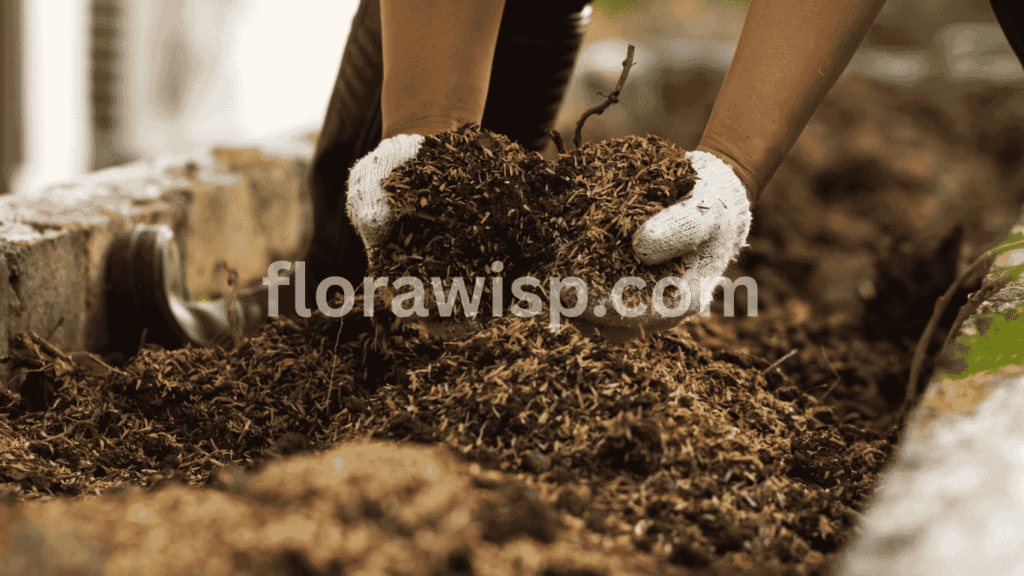Discover the 9 must-know secrets for growing Pot Marigold in containers. Avoid common mistakes, boost blooms, and unlock the full power of this healing flower before your next planting season begins! If you’re looking for a plant that’s as beautiful as it is practical, pot marigold is a top contender. Known for its cheerful blooms and healing properties, pot marigold (also called calendula) is a go-to for container gardening.
In This Article
Whether you’re tight on space or simply love the charm of potted marigolds, these plants thrive in pots and reward you with continuous color and low-maintenance care.
In my own experience, no other plant delivers quite the same combination of beauty, utility, and ease. This guide is packed with everything you need to know to succeed with pot marigold, from choosing the right soil to brewing your own herbal tea. If you’re just starting out, don’t miss my full guide on selecting and growing the best Marigold Seeds for a vibrant container garden.
Understanding Pot Marigold and Its Versatility
What Is Pot Marigold (Calendula)?

Pot marigold, botanically known as Calendula officinalis, is a vibrant, multi-purpose flower with roots in Mediterranean soil and centuries of traditional healing across Europe and Asia. Commonly referred to as pot marigold calendula, this bloom isn’t just beautiful it’s edible, medicinal, and remarkably easy to grow.
While many associate the term “marigold” with bright garden borders, the Calendula pot marigold stands apart for its herbal uses. It thrives best in USDA Zones 3–9, making it a reliable pick for most home gardens in the U.S., especially in pots and containers. If you’re curious how this variety compares to others, explore the different Types of Marigold to discover what best fits your garden style. With the right soil and sun, pot marigold flourishes in patio planters, window boxes, and even kitchen gardens.
Key characteristics of pot marigold calendula:
- Blooms in golden to deep orange shades with daisy-like petals
- Grows easily in containers, raised beds, or directly in ground
- Edible petals used in teas, stews, and natural skin treatments
- Thrives in full sun but tolerates partial shade in hot regions
- Naturally repels pests like aphids and whiteflies in mixed plantings
Whether you’re after continuous blooms or a calming cup of tea, pot marigold earns its place in any garden setup.
Is Calendula A True Marigold?
This is one of the most common questions gardeners ask and it’s an important distinction. Although both are part of the larger Asteraceae (daisy) family, Calendula and Tagetes are entirely different plants.
Below is a helpful comparison:
| Feature | Calendula (Pot Marigold) | Tagetes (True Marigolds) |
| Botanical Genus | Calendula officinalis | Tagetes erecta, Tagetes patula |
| Primary Use | Medicinal teas, salves, edible petals | Ornamental flowers, pest repellents |
| Petal Texture | Soft, sticky, resinous | Dry, papery |
| Edibility | Yes used in herbal teas and salads | No not typically edible |
| Common Names | Pot marigold, calendula | African/French marigold |
Understanding the difference helps you choose the right plant for your garden. If you’re looking for herbal uses, edible petals, or skin-soothing remedies, go with Calendula pot marigold. If your goal is to line a walkway with pest-fighting color, Tagetes is your better option.
Why Grow Marigolds in Pots?
If you’re short on space or want more control over your growing conditions, marigolds in pots are the way to go. These hardy plants don’t demand much, yet offer a big return color, fragrance, and functionality.
Planting in a marigold pot allows for:
- Portability – Move your container as the sun shifts or when frost threatens.
- Small-space gardening – Perfect for balconies, patios, or windowsills.
- Better pest control – Keep marigolds near tomatoes or herbs to repel whiteflies and aphids.
- Seasonal flexibility – Easily swap in and out with other seasonal flowers or veggies.
- Companion planting – Place pots near cucumbers, lettuce, or basil for added pest resistance.
As someone who has grown marigolds in pots on city balconies and sunny backyard decks, I can vouch for their adaptability. Just a few well-placed containers filled with pot marigold calendula can brighten a space and offer herbal benefits at your fingertips.
Choosing the Right Pot and Soil for Pot Marigold
Growing pot marigold successfully in containers starts with one crucial decision selecting the right pot and soil. Whether you’re cultivating for color, pollinators, or herbal use, the right foundation sets the stage for lush, continuous blooms.
Choosing the Best Pot for marigold calendula

After years of growing pot marigolds on patios and balconies, I’ve found that terracotta pots consistently outperform plastic ones in both root health and moisture balance. Their porous walls allow excess moisture to escape, helping prevent root rot a common issue in humid zones. Fabric grow bags are another favorite for their breathability and portability, ideal for small urban gardens or balconies. Avoid shallow containers; your marigold pot should be at least 10 inches deep to support healthy taproot development.
Best Soil for Growing Pot Marigold
Soil quality is just as vital as the pot. For USDA Zones 6–10, where Calendula pot marigold grows best, a light, well-draining mix ensures roots don’t sit in soggy conditions. My go-to blend combines:
- Sandy loam for drainage
- Cocopeat to retain moisture
- Aged compost for natural nutrients
- Optional: a handful of perlite or worm castings for added aeration
Garden centers now offer commercial bags labeled “best soil for pot marigold” or herb container blends, many of which already include this ideal balance. For dry regions like Zone 9, mix in more compost to improve water retention. In wetter climates, increase perlite to enhance drainage principles that also apply when selecting the Best Soil for Flowers across your entire garden.
Pro Tip: Elevate your pot slightly using bricks or pot feet this prevents trapped moisture and promotes healthier root growth all season long.
How to Plant Marigolds in Pots for Healthy Growth

There’s something deeply grounding about starting pot marigold seeds. Each time I press those slender seeds into warm soil, I’m reminded of the promise they carry sun-colored blooms, resilient beauty, and a quiet kind of joy. Pot marigold isn’t just a flower for me; it’s a rhythm of the seasons, a garden ritual I return to year after year.
But in my early days, I made my share of mistakes ones many gardeners still ask me about.
“Why are my marigold seedlings leggy?”
“Why didn’t my pot marigold seeds sprout?”
“Can I start marigolds too early indoors?”
Here’s what I’ve learned the hard way:
- Overwatering suffocates seedlings before they breathe life.
- Sowing too deep delays or blocks germination altogether.
- Starting too early indoors without enough light leads to weak, spindly growth.
Expert Tips for Success
- Start indoors 4–6 weeks before your last frost, using a seed-starting mix in trays or biodegradable pots. Press the seeds lightly into the surface don’t bury them.
- Keep the top layer of soil moist but never soggy. Use a spray bottle for even moisture.
- Provide 6–8 hours of bright light daily, or use grow lights to prevent legginess.
Once your pot marigold seedlings develop two to three true leaves, gently transplant them into larger containers. I always space them at least 8 inches apart to ensure airflow and full flowering potential.
I still remember a late spring when I nearly skipped sowing marigolds until my daughter insisted. We started seeds together in old yogurt cups, and by midsummer, our balcony glowed with orange and gold. That’s the magic of pot marigold easy to grow, and impossible to forget.
Trust the process, start small, and let the blooms teach you.
How to Grow Pot Marigold in Containers: From Sprout to Full Bloom
Growing pot marigold is a journey, not just a task. There’s a special kind of joy in watching a tiny seed transform into a vibrant burst of orange or gold. For me, nurturing these blooms from seed to flower brings a quiet sense of triumph year after year.
From Seed to Seedling: The Early Stage
Once your pot marigold seeds germinate, the real work begins. The first stage is about building a strong foundation:
- If seedlings appear leggy, they’re likely not getting enough light.
- Place them near a south-facing window or use grow lights to strengthen their stems.
- Avoid overwatering during this stage keep the soil just slightly moist.
Early Growth & Leaf Development
As your pot marigold seedlings produce their first true leaves, they’ll enter a period of steady growth.
- Maintain temperatures between 60–75°F.
- Ensure good airflow to prevent mold and disease.
- In hotter climates, offer light afternoon shade to reduce heat stress.
Bud Formation to Full Bloom
When buds begin to appear, it’s a clear sign your care has paid off.
Pro Tip:
Avoid high-nitrogen fertilizers at this stage. They promote foliage over flowers. Instead, use a balanced, organic liquid fertilizer every 2–3 weeks to encourage blooms.
Every season, I follow this rhythm and every season, I’m rewarded with cheerful, resilient pot marigold blooms that light up my garden and lift my spirits.
How to Care for Pot Marigold

Caring for pot marigold is where good intentions often meet real-life challenges. Over the years, I’ve fielded dozens of questions like, “Why are my marigolds wilting?” or “Why aren’t they blooming?” More often than not, the answer lies in the basics: watering, sunlight, and smart pruning.
Let’s start with water. In containers, marigolds dry out faster than in beds. I check the soil daily watering only when the top inch feels dry. During heatwaves, this can mean watering every day. But soggy soil is just as dangerous it causes root rot and weakens the plant’s structure.
Deadheading is my secret weapon for non-stop blooms. I make it a ritual snipping faded flowers every other morning with coffee in hand. It keeps energy focused on new growth and stops the plant from going to seed too early.
Quick Care Tips for Thriving Pot Marigold:
- Watering: In warm zones, water daily in shallow pots; reduce frequency in deep containers with shade.
- Sunlight: Ensure 6+ hours of direct sun, or supplement with grow lights on cloudy days.
- Deadheading: Remove spent blooms often to trigger more flowers.
- Fertilizing: Apply a balanced liquid feed every 3–4 weeks. Too much fertilizer = lots of leaves, few blooms.
One season, I neglected to prune back my marigolds and ended up with a lanky, flowerless mess. Lesson learned: pot marigold thrives on consistency, not neglect. For lasting success, pair your container routine with proper Marigold Care to keep your blooms healthy, vibrant, and full of life all season long.
Treat it right, and it’ll repay you with color, fragrance, and joy for months on end.
Bloom to Brew: How to Use Pot Marigold Tea Medicinally
One of the most rewarding uses of pot marigold is brewing its bright petals into a healing herbal tea. Known botanically as Calendula officinalis, this flower is more than just ornamental it’s a staple in my garden not only for its blooms but also for its wellness benefits.
How to Harvest Pot Marigold for Tea

For the best potency, harvest pot marigold flowers in the morning once the dew has evaporated. Gently snip the fully open blooms and lay them out in a shaded, airy space to dry for several days. Once the petals feel crisp to the touch, store them in an airtight glass jar away from heat and light.
Health Benefits of Pot Marigold Tea
Steeping 1 tablespoon of dried pot marigold petals in hot water for 8–10 minutes creates a soothing, golden infusion with gentle medicinal qualities. Here’s what I’ve personally found it helps with:
- Soothes sore throats and minor mouth irritations
- Eases digestive discomfort and bloating
- Supports gentle detoxification and liver health
- Promotes skin healing and reduces inflammation (internally and topically)
- Delivers a calming effect perfect for winding down after a long day
From bloom to brew, pot marigold is a garden-grown remedy I never want to be without.
Best Pots & Marigold Seeds: What I Recommend
When it comes to growing pot marigold, your container choice can make all the difference. Over the years, I’ve experimented with everything from glazed ceramic planters to simple plastic tubs. But the pots that consistently give my calendula the healthiest blooms are terracotta and breathable grow bags. Terracotta pots regulate moisture beautifully, while grow bags prevent root rot by allowing air circulation. Look for containers that are at least 10 inches deep, with proper drainage holes non-negotiable for healthy root development.
Best Seeds for Pot Marigold Success
Not all seeds thrive equally in containers. My go-to varieties for tight spaces include:
- ‘Calypso Orange’ – compact and continuous bloomer
- ‘Pacific Beauty’ – vibrant, resilient, and rich in medicinal oils
Now the big question: Should you start from seed or buy seedlings?
If you’re a beginner, seedlings may feel easier but I find growing from pot marigold seeds is far more rewarding. You’ll get better adaptation to your soil and microclimate.
Still wondering why some seeds thrive while others fail? It often comes down to seed quality. For dependable germination, I recommend shopping from trusted sources like Botanical Interests, Baker Creek, or Eden Brothers all of which offer non-GMO, organic pot marigold seeds.
Troubleshooting Potted Marigolds: Should You Even Grow Them in Pots?
Let’s face it growing pot marigold in containers isn’t without challenges. Common frustrations include:
- Yellowing leaves from overwatering
- Leggy stems due to insufficient light
- Weak blooming from too much nitrogen
- Pest infestations like aphids or whiteflies
So the question is: Should you grow pot marigold in pots at all?
Absolutely if you understand what they need. Pots give you flexibility to chase the sun, avoid soggy garden beds, and even bring your marigolds indoors during cold snaps.
Here are 3 expert-backed tips to avoid issues:
- Drainage is critical – Never use a pot without holes
- Sun is non-negotiable – At least 6 hours of direct light daily
- Airflow matters – Don’t overcrowd your containers; space promotes health
With the right setup and a little attention, pot marigold thrives beautifully in containers offering medicinal value, pest resistance, and bright blooms that never fail to lift the mood.
Final Thoughts:
Whether you’re working with a sun-drenched patio, a small urban balcony, or just a sunny kitchen windowsill, pot marigold proves that big beauty can come from small spaces. Its cheerful blooms don’t just brighten your day they also serve a purpose. From repelling common garden pests to offering soothing herbal remedies, this hardworking flower belongs in every container garden.
The journey from seed to bloom is filled with small victories: the first sprout, the first bud, the first cup of marigold tea. With the guidance in this article and a bit of your own care, you’ll find yourself harvesting more than flowers you’ll be gathering confidence, joy, and a deeper connection to nature.
So go ahead pick your pot, sow your seeds, and watch your pot marigold garden flourish, one petal at a time. And if you’re expanding your garden beyond pots, don’t miss this complete guide on Planting Flowers to help you build a thriving, colorful space that blooms all season long.
FAQs
Q1. How to grow marigolds in pots from seed step-by-step?
To grow pot marigold from seed, sow directly into moist, well-drained soil and press seeds lightly don’t bury them deep. I’ve seen best results when seeds are started 4–6 weeks before the last frost under bright light. Keep the surface moist, and expect germination within 5–10 days. One common mistake is overwatering or poor light, which often causes leggy pot marigold seedlings.
Q2. How to care for marigolds in pots during summer heat?
Caring for pot marigold in summer means protecting it from extremes. Water in the early morning, and if temperatures exceed 90°F, provide light afternoon shade. In my experience, ceramic or light-colored containers reduce root heat stress. Many gardeners forget to mulch dried leaves or straw help retain moisture and prevent heat damage.
Q3. How often do you water marigolds in pots to avoid root rot?
Water pot marigold when the top inch of soil feels dry usually every 1–2 days in summer, less during cooler spells. I always advise using pots with drainage holes; soggy soil suffocates roots. A common issue I see is watering on a fixed schedule rather than checking soil moisture,
trust your fingers, not the calendar.
Q4. How to plant marigolds in pots with other herbs or flowers?
To plant pot marigold with companions, pair it with herbs like basil, thyme, or oregano plants that love full sun and moderate water. I’ve had great success with a basil-marigold mix on my balcony. Just ensure all companions share similar care needs and leave space for airflow to reduce the risk of fungal issues.
Q5. What’s the difference between calendula and marigold plants?
Pot marigold (Calendula officinalis) is a medicinal herb with edible petals used in teas and salves, while Tagetes (African/French marigolds) are mostly ornamental. Calendula petals are soft and resinous, perfect for skincare, while Tagetes have firmer blooms and a strong scent. Many new gardeners confuse the two, but their uses and benefits differ greatly.
References:
National Center for Biotechnology Information (NCBI)
Royal Horticultural Society (RHS) “Calendula officinalis (Pot Marigold) – Growing Guide.”
University of Wisconsin-Madison Extension “Calendula: A Multipurpose Flower for Gardens and Containers.”
Gardener, M.Sc. Horticulture
Elara Bennet is a gardening writer from Austin, TX, passionate about sustainable lawns and blooms. Read full bio →








